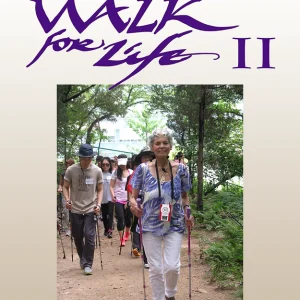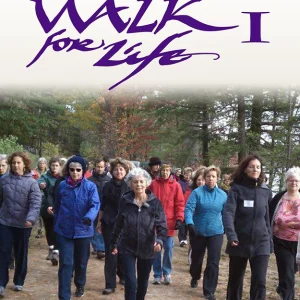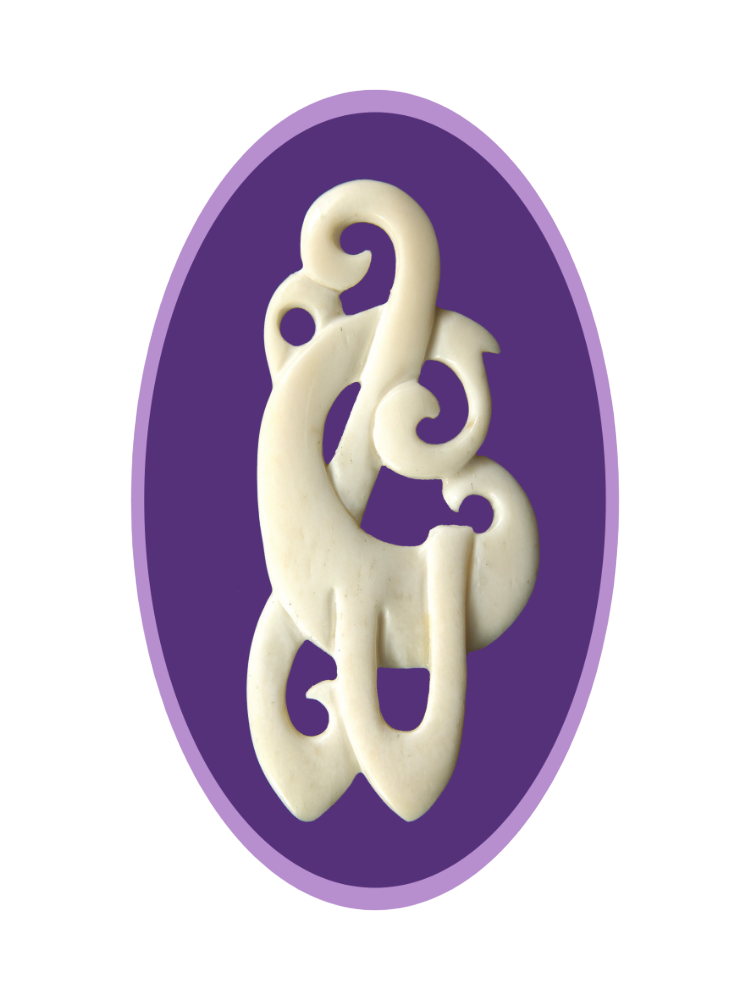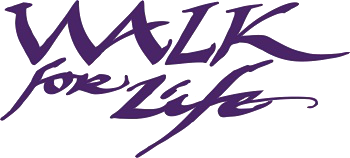
Welcome
Dynamic Walking with Poles for Health, Posture and Biological Optimism
Walk For Life
Learning how to improve the quality of the fundamental function of dynamic walk.
The Walk For Life Program
48 hours workshop of Walk for Life
consist of walking outdoors with the use of Poles, as well as indoor Movement Laboratory
of simple, yet sophisticated strategies for upgrading the quality of body coordination.
About Walk for Life
The program is following the patterns of locomotion from Evolution, tracking the Movement Intelligence which have refined them, throughout millions of years of trial and error, in ever perfection urge to enhance efficiency proved functioning, in service of life.
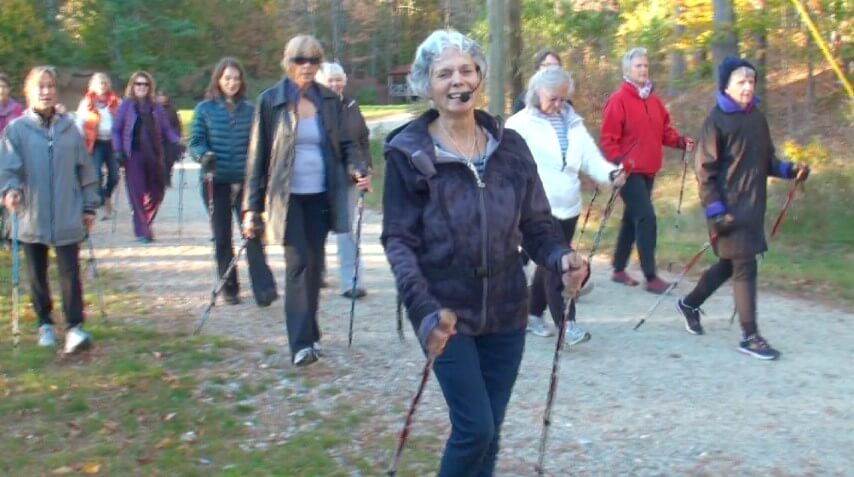
Poles are used not only to secure equilibrium, but also to revive the arms primal function of the quadrupeds’ front legs. In transmitting the rebounding force, generated from stepping on the ground, the poles work to thrust the shoulder blade backward to activate the upper spine, restoring vital flexibility and cooperation, in the most stiff
Ankles:
Cultivating springiness of ankles to restore a missing cultural Key for lively walk
Toes:
Recovering original potential skill of moving by modeling Amphibian wave of locomotion.
Knees:
Aligning the knees with the feet, hip joints and spine for easy and free of disturbance walking
Hip Joints:
Adjusting the hip joints in real time and safe walking
Upper Back:
Confronting the primary stiff factor of the
collapsed posture
Shoulder Blades:
Re-activating shoulder blades through the use of poles, simulating
the winning evolutionary pattern of quadruped’s walking on all fours.
Neck:
Spearing tension in the neck and restoring the smooth Gyroscopic function of the neck in its service to equilibrium and sensing
Coordination:
Committing to harmonious cooperation between all body parts in a Feldenkrais integrative perspective, which is the most characteristic principle in all organic life. Searching for coordination works to awaken the native Movement Intelligence, which is the leading compass to efficient self correction
Propulsion:
Using the alternating shift of weight from one side to the other in walking,
undulating a rhythmical multi- dimensional wave for generating the ballistic momentum of each step forward
Impact:
Accentuating the outsmarting of gravity in auto-mobilization by striking the pole onto the ground, in a way that loads the body with a rebounding elastic force upward.
Alignment:
Training the skeleton to spontaneously organize itself in a streamlined trajectory for the two way transmission of the mobilizing force — the body mass bearing down,
as well as the springy rebounding upward — reaching from end to end, without loss,
The poles empower the ballistic factor of propulsion. Being an extension of the arms, they reach to interact with the ground, and by economic investment the poles produce an impact of more mobilization potency than what a Bi-Pedal human leg can generate by themselves alone.

Lumbar Spine:
Weaning the vulnerable lower back from its compulsive over reaction to the impact of walking. Decompressing of the 5 lumbar vertebrae for a safe transmission of the mobilizing force
Rib Cage:
Reminding forgotten options of ribs – spine interaction, balancing the load on the back’s curves, as well as increasing volume of the chest dependent lungs for fuller revitalizing oxygen.
as well as the springy rebounding upward — reaching from end to end, without loss, deviation, or compression, in a domino-effect quality.
Poles:
Being an extension of the arms, as in four legged walking, enable the shoulders and shoulder blades to take on some of the upper body weight,
which free the lower back and the hip joints from their constant load, avoiding their risk of compression.
Posture:
There is no pill for posture. Posture is reflecting the skill, the variety and attitude of the individual’s quality of moving.
To improve your posture you have to improve your movement habits.
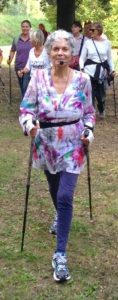
Rhythm:
Practicing different rhythms of breathing to secure generous intake of oxygen and empower vitality,
within the ecological environment of waling in fresh air, as well as increasing tolerance for walking duration
Independent Walking
The essential activity of walking in and out of doors in the program, shared in a social context with pleasure and excitement,
works to program the individual to continue walking with poles in their life too
The bodily joy of existence
The Biological optimism that is inspired by the profound experience of well organized walking, is convincing beyond any need to have reasons to walk.
Walk for life rationale
The Walk for Life Program Rationale
Dynamic Walking with Poles
If the prehistoric man was not able to walk long distances in a rhythmic and economical way, with springy propulsion, within harmonious coordination of all parts of his body synchronized to their best – he would not have survived and we wouldn’t be here today. Actually the running is even more critical test of existence.
The WFL program is devoted to decipher the complex factors of this evidence proved functional walk.
The course includes out of doors walking in Nature,
as well as indoor coordination Laboratory of simple, yet sophisticated strategies to improve the quality of walking.
Some of the explored themes are: dynamics of Propulsion, Impact, Alignment, Rhythm and the use of Poles for producing dynamic impact in the walk, reorganizing posture and stimulating vitality, as well as stamina.
Self mobilization is the basic existential function of human life. If the prehistoric man was not able to walk well long distances in an optimal coordination he would not have survived and we wouldn’t be here today.
Poles are used not only to secure equilibrium, but also to revive the arms primal function of the quadrupeds’ front legs. In transmitting the rebounding force from the ground, with each stepping foot they engage each shoulder blade alternately, and thrust it backward to the spine, restoring potential flexibility in the most stiff and non-negotiable area of the upper back. Taking off part of the body weight, as they interact with the ground through the extension of the poles , the arms are freeing the pelvis of its habitual load, so it passively suspend , and enable the lumbar to de-compress and be released of its vulnerability. This is a huge advantage for the bi-pedal civilized man, who tends to over squeeze the lumbar curve with each pounding step.
Walking with poles restores the Evolution winning mobilization model, It revives flexibility to the upper spine and relieves load from the lower back and hip joints.
The poles also empower the ballistic factor of propulsion. Evoking the rebounding force, pushing backward to the ground, they can produce by economical investment more momentum of mobilization potency than what a Bi-Pedal human leg can generate.
In this program students learn how to master the complex components of walking and running, restoring the springiness to their knees, learn to broaden the use of their feet and toes, align their legs with the spine, balance their hip joints, streamline their posture, use their sphincters, decipher effective primal patterns of locomotion, enhance stability, explore different styles and rhythms of walking, adjust breathing paces to different functions, practice strategies for coping with variant surfaces, as well as experience ways of post walk relaxation.
In the Walk for life program students are learning to decipher the optimal functioning of their knees, ankles, toes, pelvis, spine, shoulder blades, neck, coordinating them each in harmonious cooperation with the entire body, following the most essential code of organic life, where every member is affecting and being in effect of any other in the whole organism.
There is a broad consensus as to the crucial contribution of the walking function to health. (John Ratey, The Spark)
Using the aspect of the cleansing rate of body tissues, from the residue of the metabolic process, as an indication of health level, more researches found direct conditioning of health on rate of blood circulation, which is stimulated by walking outdoors or on tread mill, as well as clear increase in longevity.
Walking with Poles is a direct contribution to Health and Biological Optimism. Health means being able to walk freely in Natural quality of dynamic locomotion and enjoying to do that.
The Walk for life program comes to give an answer to this wide spread need, focusing on the quality of walking. Participants go out every day and walk in Nature, applying the ideas which were explored in their own personal movement laboratory of learning in the room.
The Themes include:
Use of walking poles
Management of power
Aligning a streamlined posture
Rhythmic and springy style in walking
Navigating propulsion force throughout the skeleton
Securing vulnerable joints in dynamic walk, like knees, lumbar, neck
Using patterns of coordination from evolutionary models
Dynamic equilibrium
Dynamics of safe and useful impact
Adjusting to variant surfaces
The Walk for life program consists of personal laboratory part of exploring walking ingredients indoors, as well as applying the self discovery insights in out--of--doors spontaneous walk.
The Walk for Life programs 1+2 include unique processes which serve to improve quality of life through easy, well coordinated and pleasurable walking . As each process is independent around its own theme, the order is not crucial. In fact, the nervous system is at its best when given to set its own order from raw un ordered information.
The poles are used not only to secure equilibrium, but also to revive the arms primal function of the quadrupeds’ front legs. In transmitting the rebounding force from the impact they evoke from being pushed into the ground, the poles work to thrust the shoulder blade backward to the spine, restoring vital flexibility and cooperation, in the most stiff and non negotiable area of the upper back, addressing the core issue of disproportional distribution of articulation in the vertebrae, which tends to accumulate into specific over-reactive are a disturbances, defying capacity to walk.
Poles, being an extension of the arms, activating the shoulder blades, work to upright the posture, by articulating the vertebrae of the upper spine, the most stiff and un- negotiable area of the by-pedal, free arms, human vertical walk.
The poles also empower the ballistic factor of propulsion. reaching to interact with the ground, can by economic investment produce an impact of pressure of more mobilization potency than what a Bi-Pedal human legs can generate alone.
Poles empower the ballistic factor of propulsion. reaching to interact with the ground, can by economic investment produce an impact of rebounding pressure of more mobilization potency than what Bi-Pedal human legs can generate alone.
Based on Feldenkrais approach to somatic learning , Walk for life program is awakening the movement intelligence of the organism for correcting its functional failures, through a process of sensing unused options of coordination. This channels the organism to sense, compare and arrive at new conclusions of changing its operation policy.
The Feldenkrais principles of roots learning is used in the WFL program in a context of actual dynamic activity, vertical plane, management of power in impactful, rhythmical and springy walking style, as essential for building bone, withstanding posture within gravity, supporting health and enhancing well being.adipiscing elit. Ut elit tellus, luctus nec ullamcorper mattis, pulvinar dapibus leo.
Based on Feldenkrais approach to somatic learning , Walk for life program is awakening the native movement intelligence of the organism to correct its counter-productive habits, through an experience of checking unused options of coordination. This channels the organism to sense, compare and arrive at its own conclusions and spontaneously change its operation policy.
The new, specific Walk for Life program has been researched by New Hampshire University, kinesiology department, finding significant improvement of 5,2 % in fitness parameters, after 5 days course, in comparison to control group.
Walk For Life Tips
Dynamic Walking with Poles
for Health, Posture and Biological Optimism
What you don’t do today
will be more difficult to do tomorrow.
What you do today
will be easier to do tomorrow
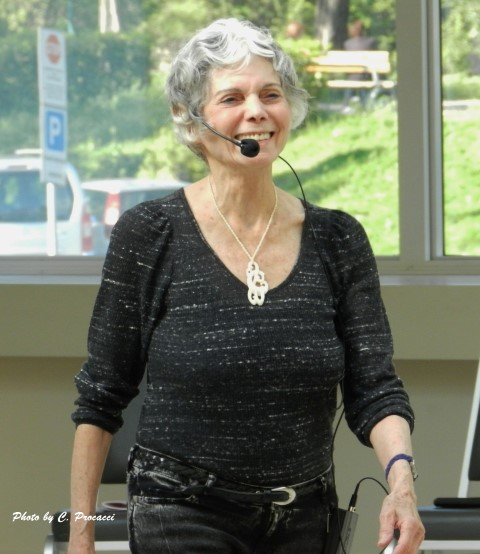
The human body,
unlike any man made machine
will not wear down,
if you keep using it all the time to its fullest potential.

Your walking is as good as your capacity to stand on one foot.
Your posture is as good as the quality of your moving
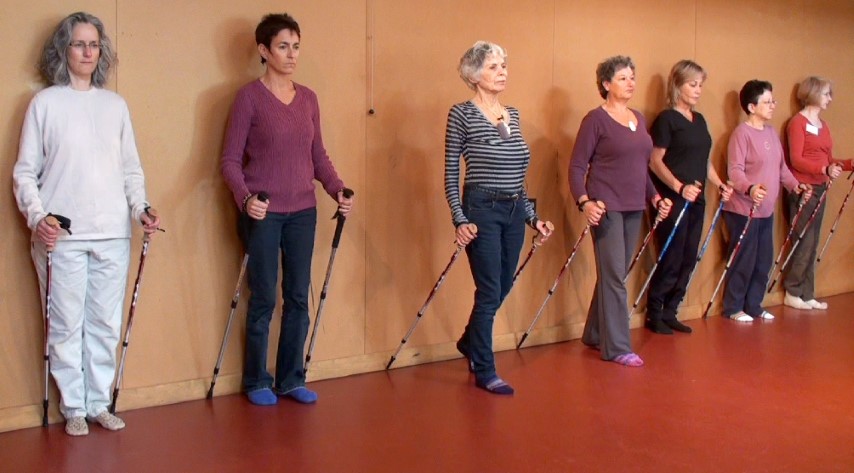
If prehistoric humans
were unable to walk well,
they would not have survived,
and we would not be here today.
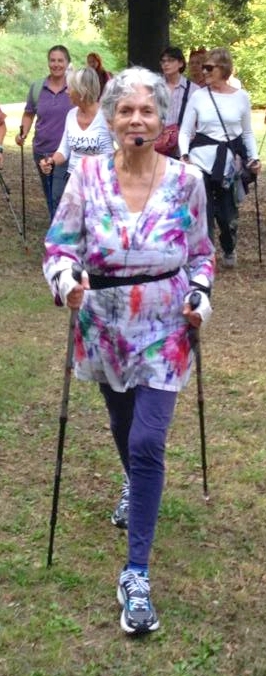
Harmonious and easily-flowing movement,
full of vitality and loaded with dynamic impact,
is in direct ratio to your joy of life and biological optimism.

Dynamic movements
which activates the body in unused organizational options
is a direct lever for developing the brain of the Homo Sapiens
Demo Process
Aligning Posture for a Safe and Dynamic Walking Demo Process
all the way down to the floor.
Is this objective vertical line
congruent with your tail bone or heels?
2. Place your right hand behind your lumbar
and sense its shape.
Start walking in place from one foot to the other.
Feel the quality of the articulation
in the vertebrae you touch,
is it smooth, harmonious, pleasant
or sharply fragmented?
and your thumb higher than the waist,
tightly attaching the full back of your hand
to your lower back,
then spread the fingers of your hand
and fixate the distance between them,
as if to stabilize and limit any articulation
between the lumbar vertebrae,
fostering in your spine a firm and reliable axis
for walking.
and step in place from one foot to the other.
Use your hand as supporting stocks
and lean your lumbar on it.
Stop and stand freely.
Listen to the way of your standing,
is there a difference?
behind the back of a chair,
place your left hand on its back rest,
as if it was a pall behind you.
Step with your left foot
one step forward
and one step backward,
leaving your left hand on the chair’s back.
the one closer to the chair,
push your left hand backward into its place on the chair,
as if it was a pole pushed into the ground.
You may need to stand a little forward
to have the chair behind you.
thrusting your spine and articulating it.
Feel the potential of reviving the flexibility
of your upper back by pushing your shoulder backward.
Notice what is happening in your lower back
at that moment of powerful action?
Does your lumbar tend to react
by deepening its curve and shortening it?
A habit of exaggerated reaction of the lumbar
to the powerful moment of stepping,
might accumulate into a problem
of over sensitive and week lower back.
of producing the impact of stepping forward
with increased pressure,
you may use your hand.
Place your right hand on your lumbar,
inhibiting it from contracting as before,
spreading your fingers
and tightening the full back of the hand
to stabilize the lower back as a reliable,
unshaken bridge, between your chest and pelvis,
forward and back repetitively.
After several times stop and sense your way of standing.
Do you detect a slight change?
switching over your hands,
stand and sense
what has been changed in your standing?
Where does the projection of your head fall now,
in relation to your tail bone, to your heels?
and walk around in space,
with your right hand slightly tightened to your lumbar,
constantly limiting excessive articulation in its vertebrae.
push your left pole diagonally backward into the ground,
to empower the propulsion of your walking,
withdrawing your left shoulder blade backward,
thrusting it toward your spine,
to shaken the stiffness of that area
between the shoulder blades.
which might be the reverse of your habit.
Healing the distribution of labor,
you remind yourself the option
of having more flexible upper back
and safely firm lower back.
Eventually walk normally,
with both your hands free.
Sense what your body has got
from experiencing the different option?
for getting beyond your habitual coordination,
and learning how to correct your posture,
in a way that is very difficult to do intentionally
without the selective guidance of your own hand and pole.
this new insight might be the key
to a safe and full of life way of walking.
Store
-
Walk For Life
Walking with poles for health & biological optimism I – 11.5 hours
$120.00 Add to cart

